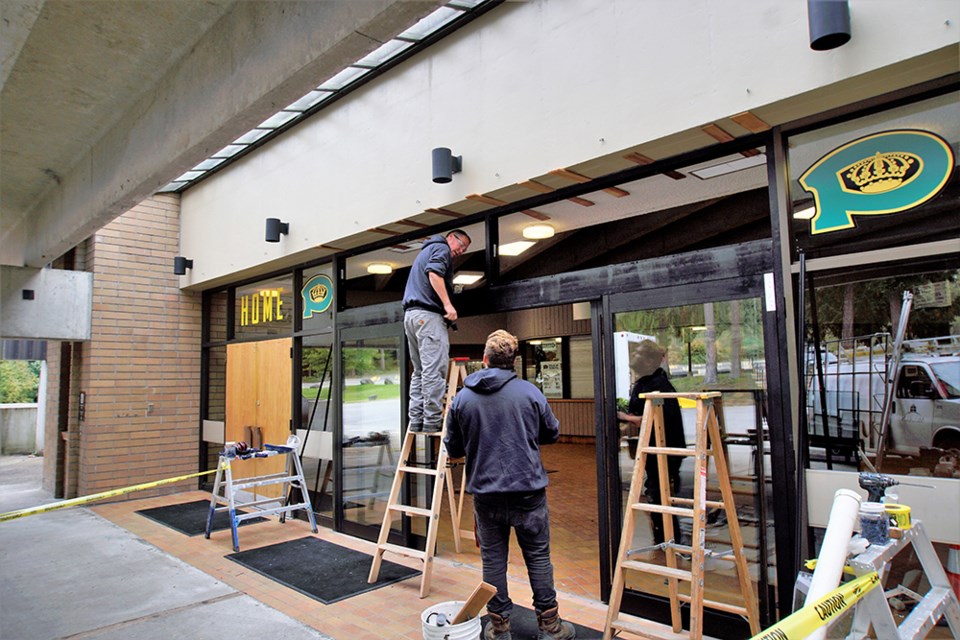Civic facility accessibility is being examined by three local governments.
At the February 23 online community-to-community (C3) meeting, representatives from City of Powell River, Tla’amin Nation and qathet Regional District (qRD) addressed the matter of accessibility inventories, which was brought to the meeting by the regional district.
qRD Electoral Area D director Sandy McCormick reported on activities of an accessibility subcommittee of the regional social action and planning advisory committee (SAPAC). McCormick said the subcommittee met on February 9 and social planner Meriko Kubota provided a summary of work done by the city toward accessibility.
“The subcommittee agreed that a first step is an inventory of all the facilities open to the public that are owned and operated by the three governments,” said McCormick. “This would include buildings as well as outdoor spaces, like parks. Research would also be done to determine if categories of accessibility exist, such as what is accessible to everyone, what is accessible to some, et cetera.
“These categories should be applied to the sites we list in the inventory so we can determine what sites are fully accessible and what sites need improvement.”
McCormick said the subcommittee agrees it would be sensible to start with facilities in each of the C3 members’ jurisdictions, and perhaps move onto the nonprofit sector or private sector later on. She said the subcommittee also agreed that signage should be installed at each facility, identifying its level of accessibility so members of the public can plan activities with this knowledge.
“It was proposed that the end product of the subcommittee would be an accessibility plan for the region,” said McCormick.
She said Kubota will approach the three chief administrative officers (CAOs) to ask for lists of facilities that are available.
City mayor Dave Formosa, who chaired the C3 meeting, said he had one suggestion from the many phone calls he has received regarding accessibility. Formosa said street sidewalk letdowns were an issue. He said for people in wheelchairs or motorized carts, there are a number of issues in the city with people getting onto sidewalks.
“This is a big issue we should consider capturing,” added Formosa.
Kubota said she has had the opportunity since the February 9 meeting to bring the matter forward to the CAOs and knows the desire of the subcommittee is to start with an inventory. She said her understanding is that an inventory would require quite a bit of effort.
Identify all corridors
City councillor Cindy Elliott said as far as an inventory goes, the city would want to identify all of its accessible corridors, and to identify all the ones that are not accessible, because that would help with future planning.
Formosa said Powell River claimed to be an accessible city at one time so maybe some work has been done regarding accessibility. City CAO Russell Brewer said the province has recently enacted the Accessible British Columbia Act and have committed to, later this year, bringing in regulations and standards as well.
“A further piece they’ve added is going to be a requirement for accessibility committees to be created,” said Brewer. “The province is doing a lot of that work and will be bringing it in. That’s not to defer doing any work but to highlight that it is coming fairly quickly.
“The other piece is inventories could be paired with assessments. We’ve done some at the city through Rick Hansen Foundation, so that’s one means. I think the first step for this group would be to bring suggestions back to their respective boards or councils.”
City councillor Maggie Hathaway, who chairs the SAPAC, said there was a huge accessibility committee a number of years ago so there’s probably basic groundwork files in existence for the committee to take a look at.
City councillor George Doubt said he liked the idea of the CAOs coming together to determine the cost of an inventory and assessment of community facilities.
“It’s not a small project; we should think about how we would do that before we get on with it,” said Doubt. “I don’t think everything is going to be 100 per cent accessible but we can work towards that and improve things local governments have control over. I’d like each of the local governments to think about how to do that while thinking about the cost of doing it.
“I like the idea of having a committee with members of the public who are not politicians or bureaucrats who are out there using the facilities. They can probably help, without doing a major study, to let people know where the worst and least accessible facilities are that could be improved right away.”
McCormick said she did not believe the subcommittee was initially looking at a big or costly study and that most of the information being sought is probably in existence. She said there may be an accessibility study required sometime in the future but an inventory could be put together via representatives from the three governments.
McCormick asked if members of the public could sit on the accessibility subcommittee. She said she thinks that’s the best thing the subcommittee could do.
Brewer said it would be up to members of the three governments to bring back suggestions from their respective boards for actions. He said to direct resources or staff to this project, he would need direction from city council.
He added that the province would be updating the building code later this year to include accessibility provisions.



